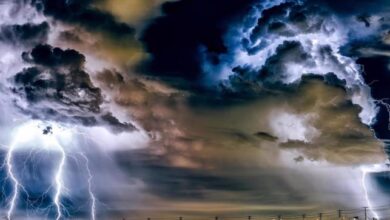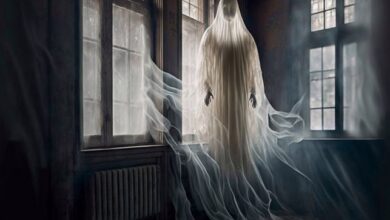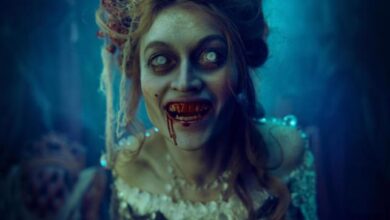The Women in Black, the M.I.B. and My Efforts to Solve Their Sinister Riddles
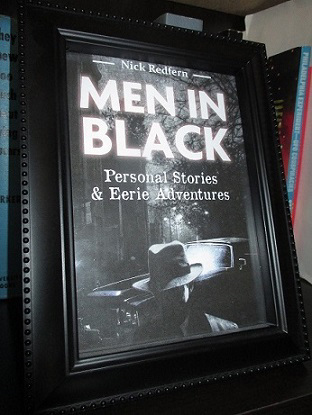
I was just eleven years of age when I was introduced to the menacing and macabre world of the enigmatic Men in Black, those dark-suited ghouls that terrorize UFO witnesses and researchers alike. It was late on a typically – and most appropriately – bleak and windswept English evening when their occult presence first darkened my door. On the night in question – wide of eye and full of youthful, pre-teen excitement and anticipation – I eagerly began reading the disturbing-yet-compelling pages of John Keel’s now-classic title, The Mothman Prophecies, which told of distinctly strange goings-on at Point Pleasant, West Virginia in the mid-to-late 1960s. Come to think of it, “strange goings-on” may not be the correct terminology to use. Outright paranormal foulness and malignancy would be far more apt, methinks. A fiery-eyed winged-thing, surreal reports of contact with enigmatic alien intelligences on lonely, moonlit, tree-shrouded roads, occult phenomena plaguing the entire town by the dead of night, and lives manipulated and transformed in ways near-unimaginable were the order of the day. And then there was the brooding, predatory, and repeated manifestations of the dreaded MIB that, I got the distinct impression, were pulling the supernatural strings of just about all those myriad entities and unspeakable things that had chosen Point Pleasant as their targets.

For reasons I have never truly been able to fathom, from that very day onwards I became particularly fascinated by the actions of the Men in Black, their silencing of UFO witnesses, their near-ethereal presence in our world, and, of course, their overwhelming and mysterious elusiveness. Who, or more likely what, were they? From where did they originate? What did they want of us? Why were they so deeply intent on silencing Flying Saucer-seekers? Even as a child, and particularly so on those proverbial dark and stormy English nights that seemed all-dominating, such questions plagued and tormented my mind. And, the further and deeper I dug into the subject, the more I found myself attempting to penetrate the veil of unsettling darkness and hostility that seemed to forever surround the MIB. In the immediate years that followed my reading of John Keel’s legendary study of Mothman, I sought out just about as many works on the MIB as was conceivably possible. And, at the absolute top of my list – in undeniably joint first-place – were Gray Barker’s 1956 title They Knew Too Much about Flying Saucers and a small and overwhelmingly bizarre book titled Flying Saucers and the Three Men. The latter was penned in 1962 by a curious and undeniably paranoid character named Albert Bender, without who there simply would be no MIB puzzle. Period.
Barker, a skilled, atmospheric, Gonzo-style writer with a flair for all-things dramatic, gothic, and turbulent, was the perfect person to address the MIB mystery – even though a self-admitted combination of embellishment, parable and exaggeration was his typical and controversial style. But, Barker would never have been in a position to do much, at all, of a MIB nature had it not been for the eccentric and occult-obsessed Bender, who, in 1953, was allegedly silenced by a trio of black-garbed, blazing-eyed entities from some strange netherworld after getting too close to the truth about Flying Saucers. Far less Mulder and Scully, and far more H.P. Lovecraft meets Devil Girl from Mars meets Bram Stoker, Flying Saucers and the Three Men presented the MIB not as government agents of the Will Smith and Tommy Lee Jones variety, but as harshly cold and emotionless aliens who seemed to be as unsettlingly familiar with matters alchemic, occult and nightmarish as they were with UFOs and faraway, fantastic worlds. Unfortunately, Bender crossed the line from “Gonzo” writing to outright lying. Appearing as well-dressed, pale-faced corpses, the terrible trio intimidated and terrified the obsessive-compulsive Bender to the point of near physical and emotional collapse. No wonder he quit Ufology and moved onto other things, such as obsessing over the works of Austrian composer, Max Steiner, who was responsible for the soundtracks to the original of King Kong and Gone with the Wind. Indeed, in 1965, Bender established the Max Steiner Music Society, and left his old life firmly in the past. As for Barker, in 1984 it was ill-health, rather than the black-garbed ones, that took him before he reached sixty. Keel continued on for a quarter of a century after Barker, still caught up in – yet never, ever quite resolving – the conundrum of the three shadowy men from beyond the veil.
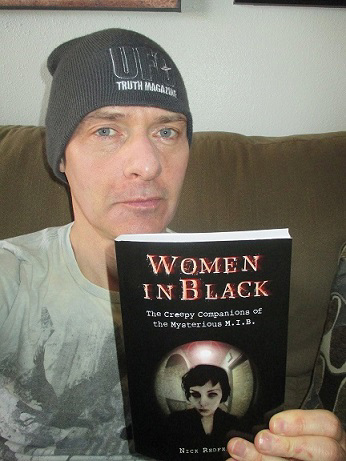
As a kid, I found the books and tales of both Barker and Bender to be even more captivating than those of Keel; despite the fact that out of the three of them, it was Keel who, in the popularity stakes, soared. Of course, as my teens became my twenties, and then my thirties, my views on the MIB phenomenon changed, in some ways subtly, but in other ways far less so. But there was one thing that never did alter: My earnest wish to solve the puzzle of the true nature, origin and intent of the Men in Black. Since those days of my childhood, I have pursued the MIB on a scale that has easily far exceeded my quests for the truth about Bigfoot, the Chupacabras, and Roswell combined. My first book, A Covert Agenda, which was published in 1997, detailed a number of curious MIB-style encounters in the British Isles from the 1950s onwards. My 2003 title, Strange Secrets, included a chapter on the little-known issue of government files on the Men in Black. Three years later, I penned On the Trail of the Saucer Spies, which was a full-length study of the secret surveillance of certain elements of the UFO research community by MIB-type characters in government. Then, in 2011, The Real Men in Black hit the bookshelves. This latter title from me specifically addressed the paranormal side of the MIB phenomenon. And there was Timothy Green Beckley’s mighty tome, Curse of the Men in Black.
In other words, while I have never been fortunate enough to have received a late-night visit from the terrible MIB (Yes, I would consider such a visit to be fortunate, as I might then be able to finally answer the riddle of who or what they really are), they have certainly got their grips into me in other ways. Having written about, and pondered so extensively on, the Men in Black, would I consider my research in this area to be a full-blown obsession? No. I prefer the word fascination. I should stress that pursuing the MIB is not something that – in any way, at all – impacts upon my social life or my day-to-day activities, but, even so, they never really go away. They’re always lurking, hovering in the shadows, and forever just out of reach. I’m certainly not the first – nor will I be the last – to be pulled, magnet-like, into the turbulent eye of the MIB hurricane. Bender, Barker, Keel: they all came before me, and all three became truly enveloped by MIB high-strangeness. And, doubtless, there will be those Men in Black seekers who will follow me down the maze-like rabbit-hole in which the MIB dwell darkly while carefully plotting their nefarious actions. But, in the meantime, my work in this particular arena is far from done – which is precisely why you are now devouring these very pages.
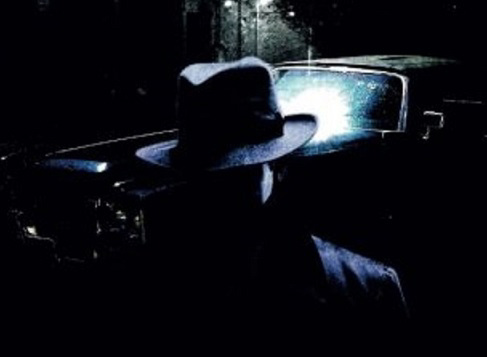
As is often the case when someone writes a book, those who read it and who have a story, or sometimes several, to tell will contact the author and relate the facts. And, as far as the MIB are concerned, that has now happened to me on countless occasions. But, purely for space reasons and to ensure that my editors do not find themselves suffering from near MIB-overload, many of the accounts I have on-file of personal and extraordinary encounters with the Men in Black have never seen the light of day. At least, they haven’t until now. It’s fair to say that my latest book on the Men in Black is somewhat of a radical departure for me, in the sense that I have specifically let the witnesses and the theorists – certainly, the most important people when it comes to trying to understand the nature of the MIB phenomenon – tell their own stories, solely in their own words. My role, here, is merely to introduce you to the plethora of players in the seemingly never-ending saga of the crazed and creepy Men in Black, and have them relate their amazing and intriguing stories. It was my original intention to write a kind of “summary-analysis”-type section after each respective report or paper. But, then, after having given the matter deep thought, I decided otherwise. At the end of the day, we all have our views and opinions on the nature and actions of the MIB, and giving my opinion on each and every bit of data would be as pointless as it would be tedious and undeniably repetitive. Instead, I leave it up to the witnesses and the investigators to share their data, and I leave it up to you to digest that same data as you see fit.
In some cases, the information is scant, but tantalizing. In others, it is lengthy and twisting. And in a few, it’s downright controversial to just about the ultimate degree possible. But, in all cases, the data is – just like the MIB themselves – uncanny, unsettling, and deeply bizarre. So, with the above all said, I now invite you to sit back – on what I most earnestly hope will be for you what it was for me the first time I encountered the MIB, namely a dark, shadowy and chilled eve – and immerse yourself in countless sinister tales of the Men in Black. Within the world of UFO research, the Men in Black are about as legendary as they are feared. These pale-faced, ghoulish entities have for decades terrorized into silence both witnesses to, and researchers of, UFO encounters. Theories for who or what the MIB might be are legion. They include: extraterrestrials, government agents, demonic creatures, vampires, time-travelers from the future, and inter-dimensional beings from realms that co-exist with ours. There may very well be more than one explanation for the unsettling phenomenon.
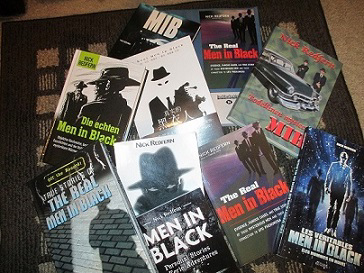
While much has been written on the sinister and occasionally deadly actions of the MIB, very little has been penned on the subject of their equally bone-chilling companions: the Women in Black. Make no mistake: the WIB are all too real. And they are as ominous, predatory and dangerous as their male counterparts. In the same way that the Men in Black don’t always wear black, but sometimes wear military uniforms or specifically beige-colored outfits, so do the WIB, who are also quite partial to white costumes. In that sense, “WIB” is, just like “MIB,” a term that is somewhat flexible in terms of actual nature and description. The WIB may not have achieved the iconic status of the MIB – until now – but these fearsome females, and their collective role in silencing those that immerse themselves in the UFO puzzle, as well as in the domains of the occult and the world of the paranormal, are all too terrifyingly real. Not only that: the WIB have a long and twisted history. Years before they plagued and tormented flying saucer seekers, the Women in Black roamed the landscape by night, stealing babies and young children, and plaguing the good folk of 19th century United States and United Kingdom. They were also up to their infernal tricks in the 1920s.
A definitive WIB surfaced in nothing less than a piece of publicity-based footage for a Charlie Chaplin movie, The Circus, which was made in 1928. The footage, undeniably genuine and shown not to have been tampered with, reveals what appears to be an old, short lady, wearing a long black coat and a black hat pulled low over her face, while walking through Los Angeles in west coast heat. If that was not strange enough, she is clearly holding to her ear what appears to be a cell-phone and is talking into it as she walks. Weirder still, the Woman in Black sports an enormous pair of black shoes, which look most out of place, given her short stature. She also seems to be taking careful steps to avoid her face being seen clearly. Might she have been some kind of time-traveling Woman in Black, working hard – but spectacularly failing – to blend in with the people of Los Angeles, all those years ago? In the 1960s, the emotionless, evil-eyed WIB turned up in the small, doom-filled town of Point Pleasant, West Virginia. And right around the time that sightings of the legendary flying monster known as Mothman were at their height. Claiming to be “census-takers,” these pale-faced, staring-eyed WIB practically forced their way into the homes of frightened witnesses to Mothman. What began as seemingly normal questions about the number of people in the house, of the average income of the family, and of the number of rooms in the relevant property, soon mutated into something much stranger: persistent and intrusive questions about strange dreams, about unusual telephone interference, and about beliefs regarding the world of all-things of a paranormal nature soon followed.
One of the WIB that put in an appearance at Point Pleasant claimed to have been the secretary of acclaimed author on all-things paranormal, John Keel, author of The Mothman Prophecies. Just like her male counterparts, she turned up on doorsteps late at night, waiting to be invited in, before grilling mystified and scared souls about their UFO and Mothman encounters. Then vanishing into the night after carefully instilling feelings of distinct fear in the interviewees. Only when dozens of such stories got back to Keel did he realize the sheer, incredible, scale of the dark ruse that was afoot. Keel had to break the unsettling news to each and every one of the frightened souls who contacted him: “I have no secretary.”
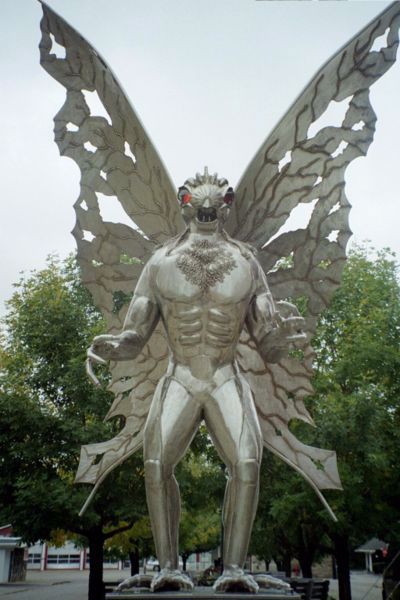
In the 1970s, wig-wearing and anemic-looking WIB made life hell for more than a few people who were unfortunate enough to cross their paths. in early 1987, Bruce Lee, a book-editor for Morrow, had an experience with a W.I.B.-type character in an uptown New York bookstore. Lee’s attention to the curious woman – short, wrapped in a wool hat and a long scarf, and wearing large black sunglasses behind which could be seen huge, “mad dog” eyes – was prompted by something strange and synchronistic. She and her odd partner were speed-reading the pages of the then-newly-published UFO-themed book, Communion, by Whitley Strieber. It was a book published by the very company Lee was working for. Lee quickly exited the store, shaken to the core by the appearance and hostile air that the peculiar pair oozed in his presence. And the sinister two groups are still with us, as weird and as mysterious as ever.

